
Seeing through the Smoke of Vintage Cigarette Ads
May 31 is World No Tobacco Day. On this day, health risks associated with tobacco use are highlighted and tobacco users are encouraged to decrease their consumption. This week, Modern Graphic History Library looks at the way cigarette advertisements from the 1910s through the 1960s have promoted smoking as socially acceptable and healthy.
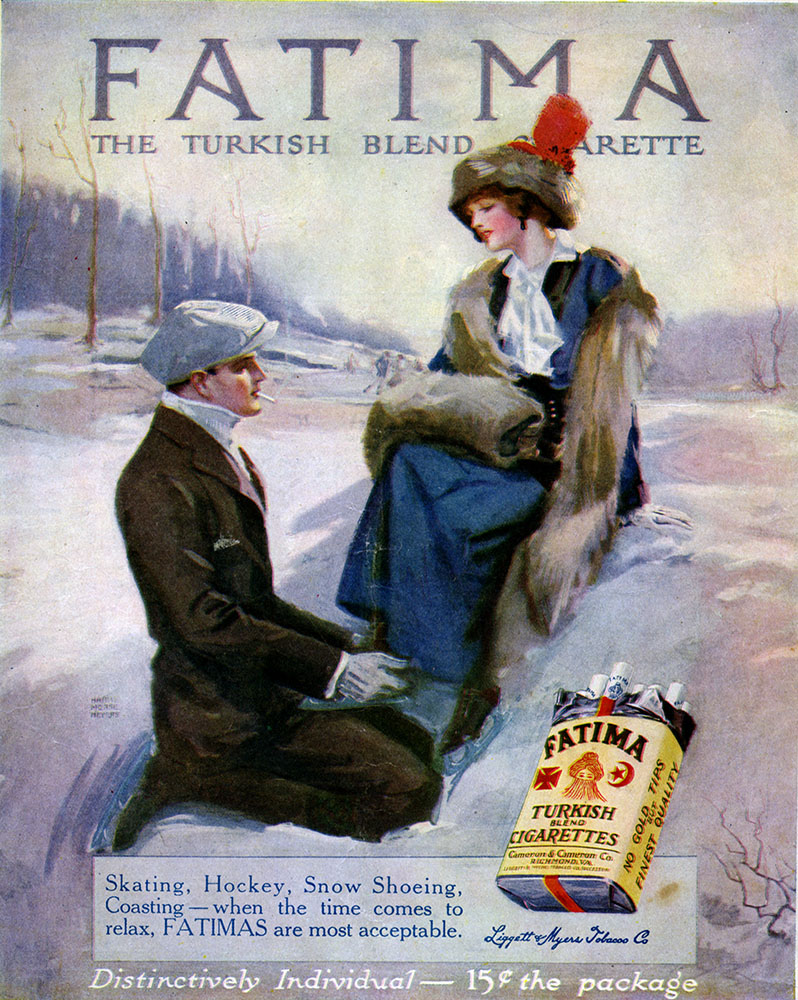
During the turn-of-the-century, cigarettes were having an image problem, and sales were dropping. Part of this was due to the tax the government-added to cigarettes during the Spanish American War. However, Americans’ growing interest in hygiene also played a significant role. Cigarettes were seen as unacceptable, dirty, foul-smelling, pollution-causing nuisances. In 1907, the New York Times reported that business owners were refusing to hire smokers. As of 1909, twelve states (many which also supported the temperance movement) banned cigarettes for adults. The number would later increase to 14.
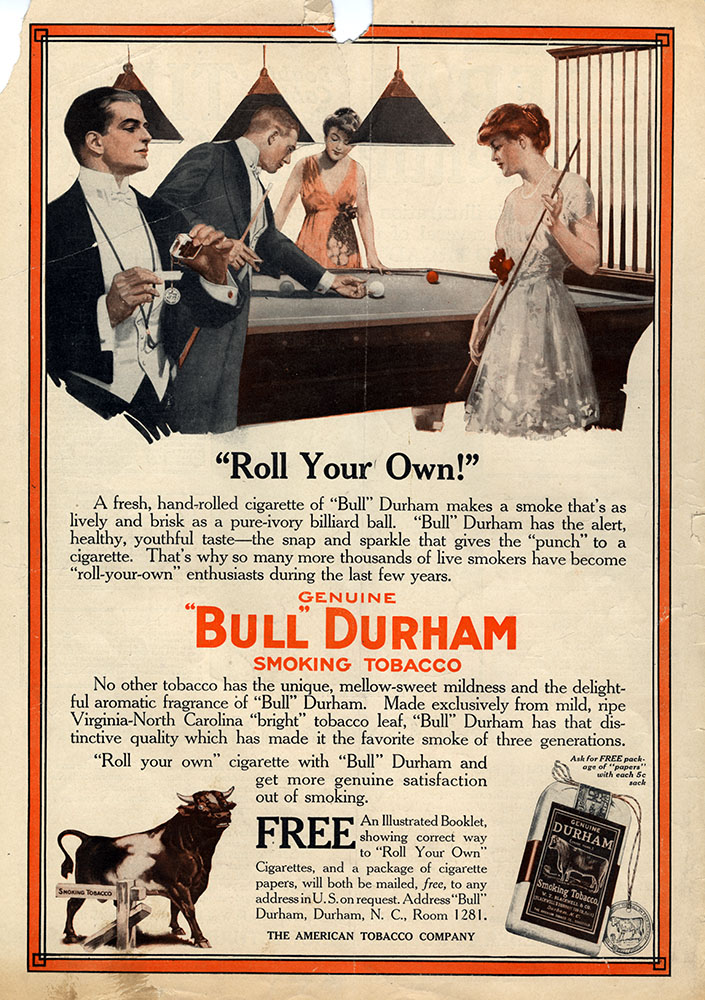
Advertisements focused on making cigarette smoking look acceptable as well as clean and hygienic. This 1915 Bull Durham ad stresses its smoke has a “delightful aromatic fragrance” and is “lively like a pure-ivory billiard ball.”
America’s entry into World War I in 1917 would ultimately change the public’s opinion on cigarettes. The military requested cigarettes for the soldiers. Americans were encouraged to donate packages to charities, such as the Y.M.C.A., which would coordinate shipping the donations. After the war, cigarettes were seen as appropriate for “everyone” to smoke since the soldiers were proudly smoking them.

In the 1920s, the advertisements showed high society smoking cigarettes. The text, however, no longer tried to justify smoking’s acceptability — the image itself implied that smoking was already accepted as a pleasurable past time. By 1927, the fourteen states that had banned tobacco had either eliminated the ban or had eased restrictions.
Advertisers also focused on women during the 1920s. There was concern among the tobacco companies that they could lose female customers if cigarettes were only associated with war and soldiers. As women started showing more independence during this decade, smoking was seen as one way to do this, and advertisers took note.
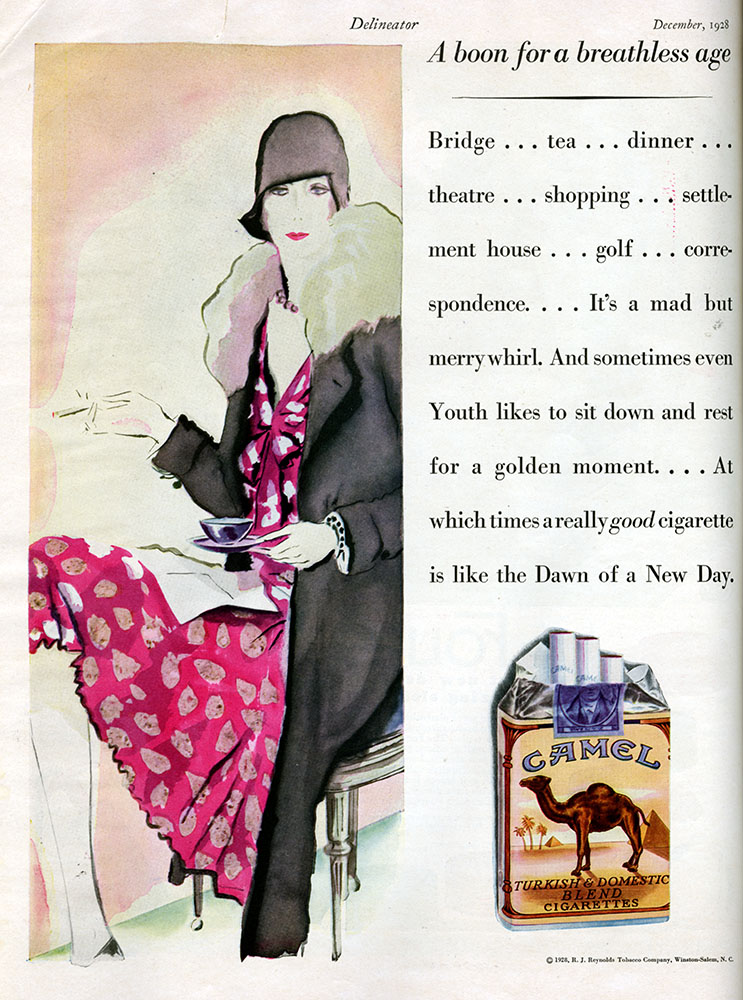
During the 1930s, Lucky Strike focused on romance and sexuality. Cigarette smoking was shown to be an activity for couples. Lucky Strike advertisements were featured on the back of weekly Liberty magazines, often alternating with Coca-Cola ads. These colorfully striking images were eye-catching as the back cover and drawn by well known illustrators of the time, including Neysa McMein, Hayden Sundblom, and Hayden Hayden.

Meanwhile, Camel focused on “freshness.” They introduced a Humidor pack, which guaranteed the cigarettes would be moisture-free and germ-free, and therefore “throat-friendly.” The implication was that Camel cigarettes were healthy and that your doctor would approve a “throat-friendly” product.

During the 1930s, the Federal Trade Commission (FTC) was concerned about the health benefits that cigarette advertisements were claiming. However, the FTC did not have enough evidence to dispute these claims until 1938. From 1938 – 1953, the FTC issued seven cease-and-desist orders against cigarette companies claims.
However, through the 1940s, Camel advertisements continued to include images of smiling doctors. If a doctor you trusted to take care of your family was happy to smoke a Camel, there must not be a health concern.
America’s involvement in World War II reconnected cigarettes to war-themed advertising. Americans were once again encouraged to support the troops by sending cigarettes overseas.Camel advertising stated that purchasing their cigarettes was equivalent to buying a war bond.
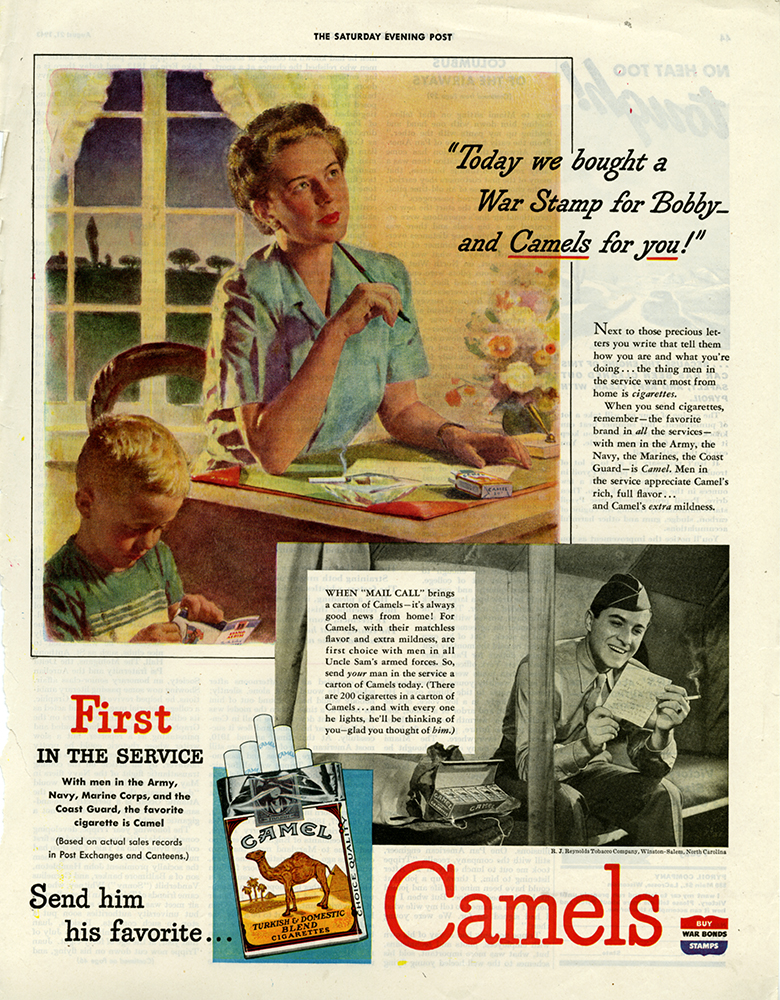
After the war, magazine illustration began to focus on glamour. The drawings had a modern, “shimmery” look to them. Advertisements for some cigarette brands, which had always presented their product as part of a glamorous lifestyle, were now illustrated in this “glamour style.”
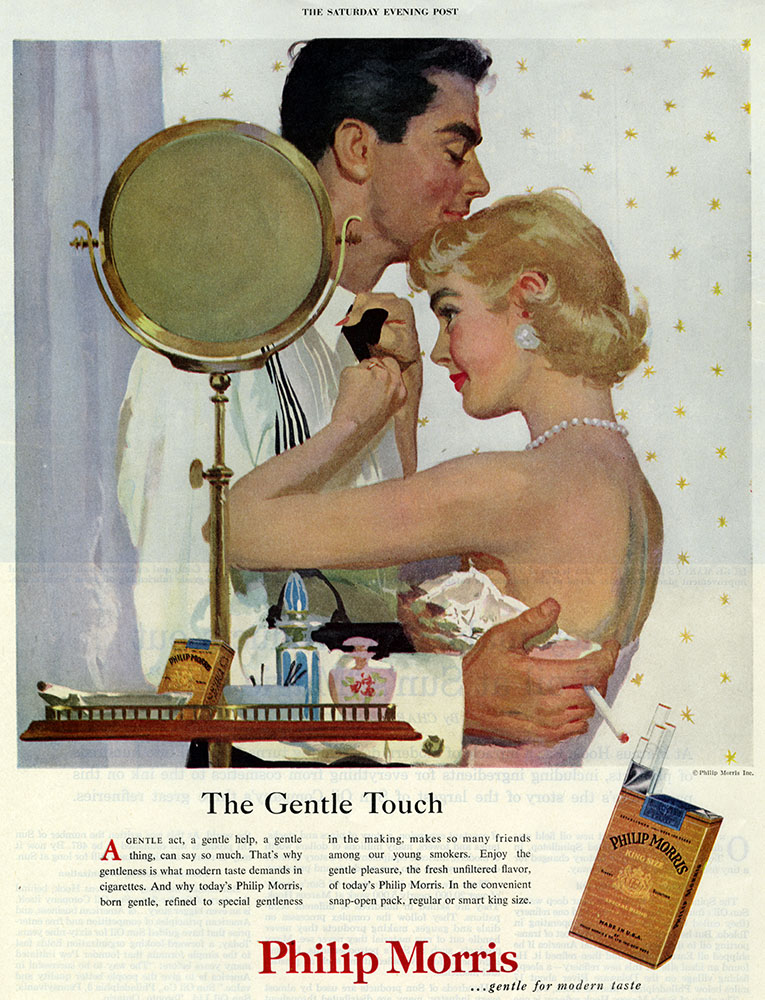
The “glamour style” for magazine illustration remained popular through the 1960s. Advertisements continued to focus on glamorous people in social situations, enjoying cigarettes. As more and more scientific reports were released about health concerns with tobacco, the advertisements no longer were linking cigarettes to healthy living. Instead, cigarettes were linked to a fashionable, modern, glamorous lifestyle.
In 1966, cigarettes and cigarette advertising were required to include a warning about health risks connected to smoking.
Credits:
- The Camel advertisement drawn by Eric is from the Periodicals Collection.
- All other images are from the Walt Reed Illustration Archive.
Information about cigarette advertising came from the following sources:
- Baker, Frank W. Brief History Of Tobacco Ads In The US. Frankbaker.com, March 9, 2000.
- Burns, Eric. The Smoke Of The Gods: A Social History Of Tobacco. Temple University Press, 2007.
- Tobacco Timeline. TobaccoArchives.com, 2003.